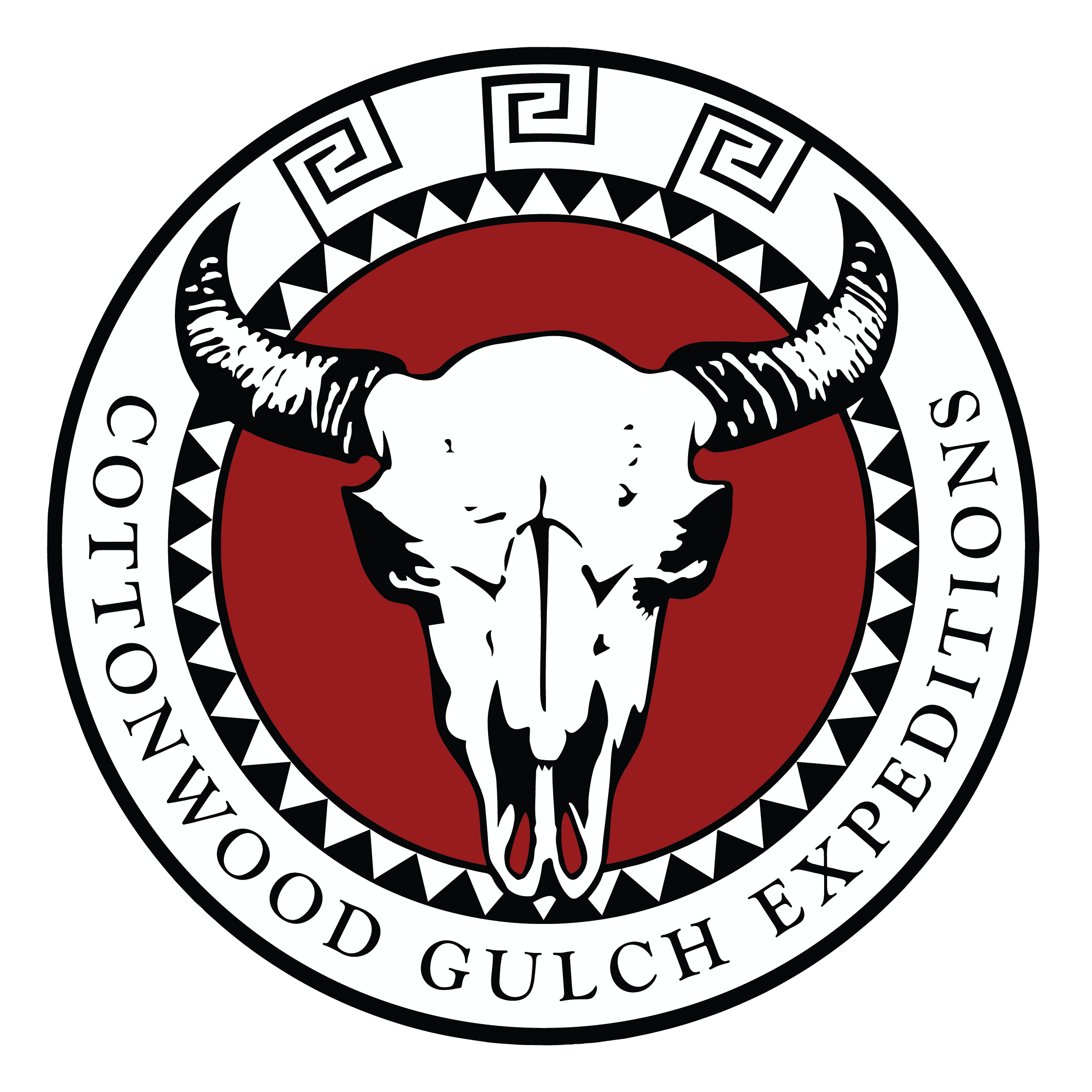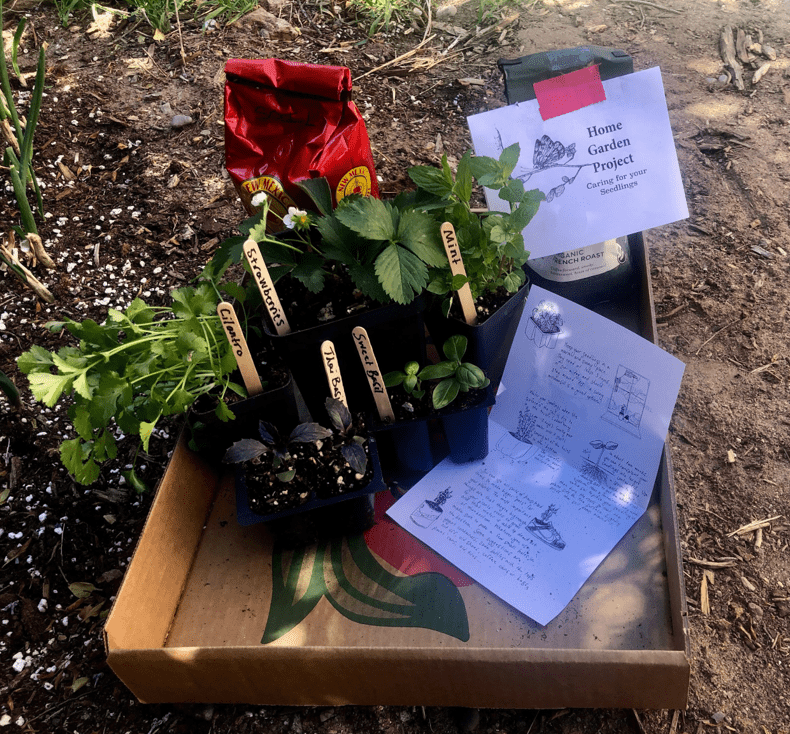The day before Albuquerque closed all schools, Monica and I were at South Valley Prep teaching the eighth graders “how to pack a backcountry backpack” in preparation for their upcoming five-day Wilderness expedition. As part of the Students in Wilderness Initiative (SIWI), these students and hundreds of others had been preparing for this trek since the beginning of the school year, joining the Gulch on a series of single- and multi-day trips into local Wilderness areas and learning about environmental stewardship in the classroom. The backpacking trip was supposed to be the culmination of this time, a challenging yet rewarding celebration of their outdoor abilities. The kids were stoked.
That same day, I was finalizing logistics for a trip into the Sandia Mountains the following morning with students from Technology Leadership High School. Every Friday since mid-January, we had been going out into the community to work on assorted conservation initiatives as part of our Outdoor Service Learning program. In the upcoming weeks, we had plans to do a session of Solitude Monitoring with the Cibola Wilderness Rangers, plant Salt Grass at Valle de Oro with Rocky Mountain Youth Corps, and survey trail signs at Tent Rocks National Monument with the BLM. Those kids were stoked too, though high schoolers have a different way of showing it.
My heart sank when, a week after the school closure announcement, I learned that the Gulch was cancelling all in-person Spring and Summer programs to support efforts to stop the spread of COVID-19. While I’ve wholeheartedly supported this decision since its inception, I admit that I initially felt a sense of loss for our existing and prospective programs. I mourned what felt like a break in the incredible momentum that we had seen our students building, as well as all the preparation that we’d been doing to strengthen our programs for the upcoming seasons. I’d been eager to start the Spring field season in the coming weeks, meet the new staff and trekkers, and experience my first Summer at the Gulch, which I’ve routinely heard described as “magical.”
In the six weeks since we made that decision, the initial sense of loss has transformed into awe for the ingenuity and commitment that our staff, teachers, students, and broader community have demonstrated during these unprecedented times. I’ve felt unwavering gratitude for the Gulch’s commitment to keep our current staff employed and to honor our contracts with those schools that want to make us a part of their transition to ‘online learning.’ This new form of education has challenged teachers, students, and families, raising questions of how to keep students engaged remotely, how to overcome the access barriers to adequate technology that many students face, and how to re-create the integral interpersonal experiences and support networks that school provides. As outdoor educators, we’re facing many of the same challenges. After all, the essence of the Gulch is experiential: our pedagogy is and long has been place-based and hands-on. We revel in the shared feeling of sun on our backs and smoke in our eyes, not a screen in sight and nothing lost for it.
While it’s disappointing to remember that, at this moment, I would be backpacking in the Gila Wilderness with a group of rowdy eighth graders instead of sitting at my computer, it’s not much to complain about compared to the impact that the COVID-19 pandemic has had on millions of others around the world. And while I believe it’s necessary to sit with the hardships and loss that have ensued from the virus and the accompanying shut-down––and to do what we can as individuals and as an organization to help mitigate them––I also believe that there is immense value in highlighting the silver linings.
If you’ve tuned into our “Virtual Campfires” on Friday nights, then you’ve already seen the breadth and strength of our online Gulch community. It’s been profound to watch trekkers from the sixties posting comments alongside teachers from schools that we started working with this year, and to know that people for whom the Gulch has meant so much have a newfound platform for connection. At one of our recent campfires, everybody on screen sang “Desert Silvery Blue” from their homes to close out the evening. The result was some kind of broken round that we could hardly finish through the laughter. It was perfect in its imperfection, chaotic and spontaneous and hopeful, all-in-all emblematic of the Gulch experience.
Prior to our unconventional rendition of DSB, Dena introduced the idea of a ‘fallow year’ in farming, in which the fields are left unplanted so that the land can replenish itself to be more fertile in the future. This metaphor feels fitting, as more and more we’re able to see this time not as a disruption of the “Gulch way,” but as a chance to reflect, rejuvenate, and give back. And while most of our energy has gone into improving base camp facilities and programming for the years to come, many of our initiatives are necessarily looking at the needs of our broader community here in New Mexico.
We made the decision to donate some food items from our dry foods shed and freezer to the Roadrunner Foodbank here in Albuquerque, which is the largest hunger relief organization in the state. Although it’s a small contribution, we acknowledge that this food––purchased in quantities meant to feed forty kids at a time––will be better and more immediately used by those suffering from food insecurity. We’re also working to extend our efforts to Western New Mexico by supporting the Navajo-Hopi Families COVID Relief Fund, a grassroots indigenous led group operating on the Navajo and Hopi Reservations that assists struggling individuals and families by safely providing groceries, water, and health supplies. Having been located in Thoreau for ninety four years and Albuquerque for over twenty, we are excited to give back in the ways that we’re able. It’s a way of saying thank you for all that these places and people have given to us.
Alongside these community initiatives, we are continuing to adapt and re-engineer our approach to outdoor education. As part of an initiative launched by New Mexico MESA, we’re partnering with outdoor educators from all over New Mexico to help distribute STEM materials for schools to include in their reduced-lunch distributions. And although we may not be leading herds of students through the wilderness this spring, we are continuing to connect with students and teachers from our SIWI schools by sending out resources and activities to continue guiding students, or lead them to guide themselves, in the outdoors.
With the help of some incredible teachers and a generous contribution of seedling donations from Alameda Greenhouse, our neighbor here in the North Valley, we’ve launched the Home Garden Project with high school students from Tech Leadership. As an alternative to in-person service learning projects, they’ve been requesting kits of materials––herb and vegetable seedlings, packages of soil, and instructions––to start their own home gardens. They send updates and ask questions via email or at “virtual after-school” on Wednesday afternoons, which has become a wonderful platform for connection. Our hope is that, once school is back in session, we can transform the Home Garden Project into a Community Garden Project, building urban gardens in their classrooms and in other locations around Albuquerque for years to come.
Perhaps it’s not such a fallow year after all.
As we look forward to the months ahead, we know to expect the unknown. The state of the world and our place within it changes every day, and sometimes it feels futile to plan too far ahead, or at least to get attached to those plans. Yet as we proceed into the unknown, we can maintain our intention and sense of obligation to our community, both near and far. In doing so, we hope that our actions demonstrate our immense gratitude for the support that our vast Gulch community has long shown us and continues to show in these challenging times. In a chapter titled “Allegiance to Gratitude” from Robin Wall Kimmerer’s Braiding Sweetgrass, she speaks to what can be learned from the Haudenosaunee’s Thanksgiving Address. Her words can continue to inform our actions going forward:
“Cultures of gratitude must also be cultures of reciprocity. Each person, human or no, is bound to each other in a reciprocal relationship. Just as all beings have a duty to me, I have a duty to them. If an animal gives its life to feed me, I am in turn bound to support its life. If I receive a stream’s gift of pure water, then I am responsible for returning a gift in kind. An integral part of a human’s education is to know those duties and how to perform them.
The Thanksgiving address reminds us that duties and gifts are two sides of the same coin. Eagles were given the gift of far sight, so it’s their duty to watch over us. Rain fulfills its duty as it falls because it was given the gift of sustaining life.
What is the duty of humans? If gifts and responsibilities are one, then asking, “What is our responsibility?” is the same as asking, “What is our gift?” It is said that only humans have the capacity for gratitude. That is among our gifts. It’s such a simple thing, but we all know the power of gratitude to incite a cycle of reciprocity…We know that appreciation begets abundance.”
Alizah joined Cottonwood Gulch in Fall 2019 as a field educator, and now is our SIWI Coordinator where she assists with SIWI programming and has developed our winter after-school programs.

